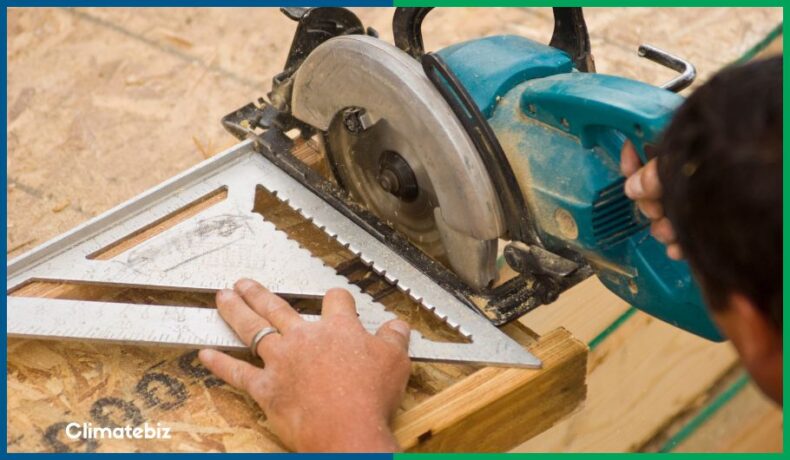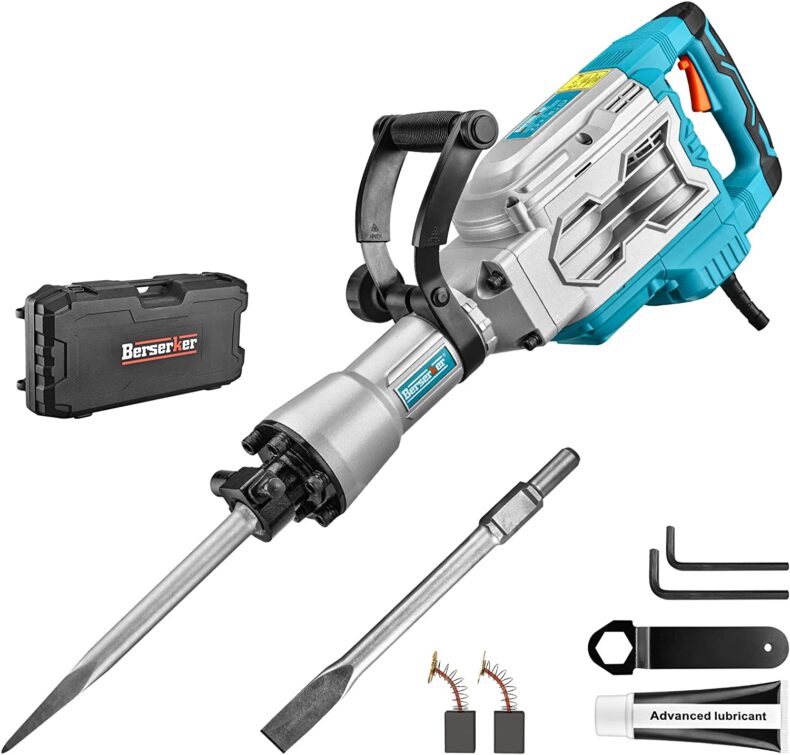Are you wondering how big of an inverter you need to run power tools? Well, you’ve come to the right place! In this article, we’ll explore everything you need to know about choosing the right inverter to power your tools. Whether you’re a DIY enthusiast or a professional contractor, understanding the size of the inverter is crucial for a smooth and efficient workflow. So, let’s dive in and unlock the secrets of powering your tools with the perfect inverter!
When it comes to running power tools, it’s essential to find an inverter that can handle the electrical demands. But don’t worry, we’re here to make it easy for you. In this guide, we’ll break down the factors you need to consider to determine the right inverter size for your tools. From wattage requirements to understanding surge capacity, we’ll cover it all. So, by the end of this article, you’ll be equipped with the knowledge to pick the perfect inverter for your power tools.
Now, you might be thinking, why go through all this trouble? Can’t I just plug my tools into any inverter? Well, not exactly. Using an inverter that’s too small can lead to power disruptions, overheating, and even damage to your tools. On the other hand, choosing an inverter that’s too large would be a waste of money and resources. That’s why finding the right balance is crucial. So, let’s get started and find out how big of an inverter you need to power your tools like a pro!
Looking to run power tools with an inverter? Here’s how to determine the right size:
- Identify the power requirement of each tool
- Add up the wattage for all tools
- Consider any additional power needs
- Choose an inverter with a continuous wattage rating slightly higher than the total
- Ensure the inverter has the necessary surge capacity
By following these steps, you can find the perfect inverter size to run your power tools smoothly.

How Big Inverter Do You Need to Run Power Tools?
When it comes to running power tools with an inverter, choosing the right size is crucial. An inverter converts DC power from a battery into AC power, allowing you to use your power tools without connecting to a traditional power source. However, the size of the inverter you need depends on various factors, including the power requirements of your tools and the maximum power surge they may experience. In this article, we will explore the considerations you should keep in mind when determining how big of an inverter you need for your power tools.
Understanding Power Requirements
Before diving into the specifics of inverter sizing, it’s important to understand power requirements. Power tools typically have a specific power rating, which is indicated in watts or amps. The power rating tells you how much power a tool consumes while operating at its maximum capacity. This information can help you determine the size of the inverter you need.
When calculating the power requirements, add up the wattage or amperage of all the power tools you plan to use simultaneously. This will give you an idea of the total power consumption. Keep in mind that some tools may have a higher power surge when starting up or under heavy loads. You should take this into account when choosing an inverter as it needs to handle these power spikes without causing any interruptions or damage to your tools.
Additionally, consider the duty cycle of your tools, which refers to the amount of time a tool will be in use during a specific period. If you plan to use your tools continuously for extended periods, you may need to size up your inverter to ensure it can handle the sustained power demand.
Calculating Inverter Size
Once you have determined the total power consumption and factored in any power surges, you can calculate the size of the inverter you need. As a general guideline, choose an inverter with a power rating that is 20-30% higher than your total power consumption. This buffer will ensure that your inverter can comfortably handle the power demands of your tools without straining or overheating.
For example, if the total power consumption of your tools is 2000 watts, choose an inverter with a power rating of at least 2400 watts. This will give you a safety margin to account for power surges and prevent overloading the inverter.
Keep in mind that inverters also have a maximum continuous power rating, which indicates the power they can sustain over an extended period. Make sure the inverter you choose has a continuous power rating that meets or exceeds your total power consumption, ensuring that it can handle the sustained power demands without overheating or shutting down.
Considerations for Specific Power Tools
While the general guidelines above apply to most power tools, certain tools may have unique requirements that need to be taken into consideration when sizing your inverter.
High-Starting Current Tools: Tools such as air compressors or table saws may have a high starting current, which can cause a significant power surge when they first turn on. In such cases, it is important to choose an inverter that can handle the additional power surge without tripping or causing any damage.
Variable Speed Tools: Power tools with variable speed settings, such as drills or routers, may have varying power requirements depending on the speed setting. Make sure to consider the highest power requirement of the tool when calculating your inverter size.
Heavy Load Tools: Tools that are frequently used under heavy loads, such as angle grinders or circular saws, may require higher power capacities. It’s important to consider the sustained power demand of these tools when choosing an inverter to prevent it from overheating or shutting down during extended use.
Tips for Using an Inverter with Power Tools
Here are a few tips to ensure optimal performance and safety when using an inverter with power tools:
- Invest in a high-quality inverter that is specifically designed for running power tools. This will ensure reliability and durability.
- Keep the inverter well-ventilated to prevent overheating. Avoid placing it in enclosed spaces or covering it with objects.
- Use appropriately sized cables to connect the inverter to your battery. This will minimize power losses and ensure efficient power transfer.
- Regularly check the connections and cables for any signs of damage or wear. Replace any damaged components promptly to maintain safe and reliable operation.
- Consider using a battery monitor or power meter to keep track of your power consumption and ensure you do not exceed the limits of your inverter.
- If you frequently use power tools on job sites or in remote locations, consider investing in a portable generator instead of relying solely on an inverter.
Conclusion
Choosing the right size inverter is essential for running power tools efficiently and safely. By understanding the power requirements of your tools, calculating the appropriate inverter size, and considering any specific needs of certain tools, you can ensure optimal performance and prevent any power interruptions or damage. Follow the tips provided to maximize the usage of your inverter and enjoy the convenience of running power tools wherever you go.
Key Takeaways: How Big Inverter to Run Power Tools?
- Choose an inverter that provides enough wattage to meet the power requirements of your power tools.
- Consider the starting wattage and running wattage of your tools when selecting the inverter size.
- Check the power ratings of your tools and add them up to determine the total wattage needed.
- Aim for an inverter with a larger capacity than your calculated wattage to accommodate for power surges.
- It’s advisable to consult an electrician or the tool manufacturer for specific recommendations.
Frequently Asked Questions
Welcome to our FAQ section where we answer common questions about choosing the right inverter for running power tools. Read on to find answers to your queries!
1. Can I use any size inverter to run power tools?
No, it’s important to consider the power requirements of your power tools. Different tools have different power demands, so you’ll need to choose an inverter that can handle the maximum power draw of the tool you plan to use.
Make sure to check the tool’s specifications or label for its wattage rating. To be on the safe side, you should choose an inverter that can deliver more power than the tool requires to account for any power surges or fluctuations.
2. How do I calculate the size of the inverter I need?
To determine the size of the inverter you need, add up the wattage of all the power tools you plan to run simultaneously. This will give you the total wattage required.
Remember to include any power surges or peaks that may occur. Once you have the total wattage, choose an inverter that can handle at least 20% more power than the total to ensure optimal performance and prevent overloading.
3. Can I use a smaller inverter and still run power tools?
You may be able to use a smaller inverter, but there are some limitations. If the inverter is not powerful enough, it may struggle to provide enough power to operate your tools effectively.
In addition, running power tools on an inverter that is too small may cause the inverter to overheat or even damage the tools. It’s best to choose an inverter that is properly sized for your power tool needs.
4. What are the consequences of using an inverter that is too big for my power tools?
If you use an inverter that is larger than what your power tools require, you won’t face any negative consequences. The inverter will simply provide the necessary power for your tools without any issues.
The only downside of using a larger inverter is the cost. Larger inverters tend to be more expensive than smaller ones, so you may be paying more than necessary if your tools don’t require that much power.
5. Are there any other factors to consider when choosing an inverter for power tools?
Apart from the power requirements, it’s essential to consider the type of power tools you’ll be using. Some tools, like motors or compressors, have high starting currents, which means they require more power briefly when they are turned on.
In such cases, it’s advisable to choose an inverter with a higher surge rating to handle these initial bursts of power. Additionally, consider the inverter’s battery capacity, portability, and any additional features that may be important for your specific needs.

Summary
If you want to run power tools with an inverter, make sure the inverter has enough power. Check the wattage of your tools and choose an inverter with a higher wattage rating. Don’t forget to check the starting wattage for tools that require more power when they turn on. Always be safe and follow the manufacturer’s guidelines when using power tools.
In conclusion, using an inverter to power tools is possible, but you need to choose the right one. Consider the wattage and starting wattage of your tools to ensure you have an inverter with enough power. Safety is important, so always consult the manufacturer’s guidelines.
